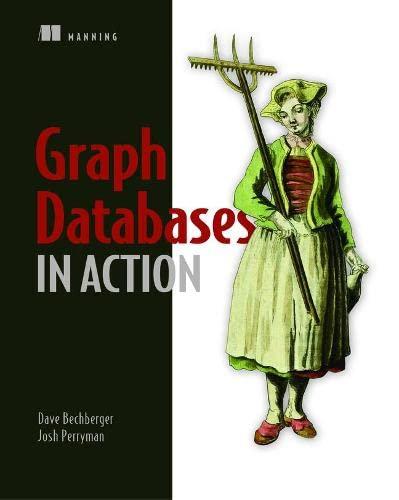Question
Requirements: You are to design an E/R diagram for contact tracing to be able to trace rapidly people who may have been in close proximity
Requirements: You are to design an E/R diagram for contact tracing to be able to trace rapidly people who may have been in close proximity to someone diagnosed with coronavirus. Contact Tracing: We need to know where and when a person has been in order to know whom that person has been in contact with. We need to know that about everyone else too. Then we could find out the possible contacts by seeing who was in places at the same time as the person. During an epidemic of a highly infectious disease, tracing recent contacts with a sick person may warn them to take appropriate action. This can go a long way in containing the epidemic. Therefore, person is of fundamental importance in our database. After all, we trace people. Information that we should keep for people is name, address and telephone number. We can keep the SIN of a person's social security number to identify the person (Assuming that the government will issue a temporary sin to anyone who has no sin for this purpose. We should also include places. This includes public buildings and other indoor spaces where people can meet and thus come into contact. (We assume that the disease is not transmitted outdoors for the time being, so we don't track all possible places. We can use the name of a place to identify it and we want a place's GPS coordinates, address and a description. The focus of the entire database operation is the recording of "observations" about where a person has been and when he was there. In order to be able to organize our thoughts more easily, let us call an observation that such a person was in such a place at such a time a Recon a shortened form of the military term reconnaissance. A Recon names a person (who) is at a certain point in time (when). Let's use the term time slot for processing time. There will effectively be an entry in the time window for every fifteen minute period, 3:00 p.m., February 15, 2021, 3:15 p.m., February 15, 2021, 3:30 p.m., February 15, 2021 and so on. For every time window in which a person has been observed to be somehow in a place, we would have a Recon entry. Thus, each Recon is assigned to a time window that tells us when the person was there. (A better way to deal with time in such a scenario is to work with time intervals. However, this is much more complex in terms of design. Hence for our first cut of a schema for our contact tracing database - that is for this project - Let's use the timeslot to handle the "when" aspect.) Indeed, we can use the point in time to identify a particular timeslot. (Let's say the When value indicates the start of the time window. For example, 3:00 PM means 3:00 PM to 3:15 PM.) A Recon then identifies - and is therefore at least partially identified by - the person, the place and the time window (when), which means that this person (who) was at the place during that time window (when). For each Recon, we also need to record the method by which we know the person was there at the time. Examples of methods could include a phone contact tracking app, a surveillance camera with facial recognition, and a registration entry (the person had to sign a registration book when entering and exiting the building). Note that there may be more than one review telling us that a person is in a place at any given time, each review being supported by different method. In our database we also need to keep track of when a person is tested, a test for the disease. Such a diagnostic test is administered to a specific person at a specific point in time (time window). This information identifies a particular test. A test is done in a test center - a place - and has a certain type of test. (There are different types of tests for the disease, which vary in effectiveness and cost.) So we want to keep a record of where and what type of test was done. A test can lead to an action. Have Action identified by an action name. (An action can be taken based on the test result. For example, if it is positive for the disease, the person may be quarantined.) Suppose a particular test results in at most one action. Of course, a test cannot lead Ho any action. (For example, say the test was negative and no action was required.) We want to track actions that result from testing. Not all test centers are equipped to manage all test types. Therefore, we want to record which test types are offered in which test centers. A test center can offer different types of tests. And some type of test may be available at a number of test centers. Finally, the government must require that every person identify their bubble; these are family and friends - other people with whom they are in regular contact. We need to record this "bubble" information in the database.
Step by Step Solution
There are 3 Steps involved in it
Step: 1

Get Instant Access to Expert-Tailored Solutions
See step-by-step solutions with expert insights and AI powered tools for academic success
Step: 2

Step: 3

Ace Your Homework with AI
Get the answers you need in no time with our AI-driven, step-by-step assistance
Get Started


